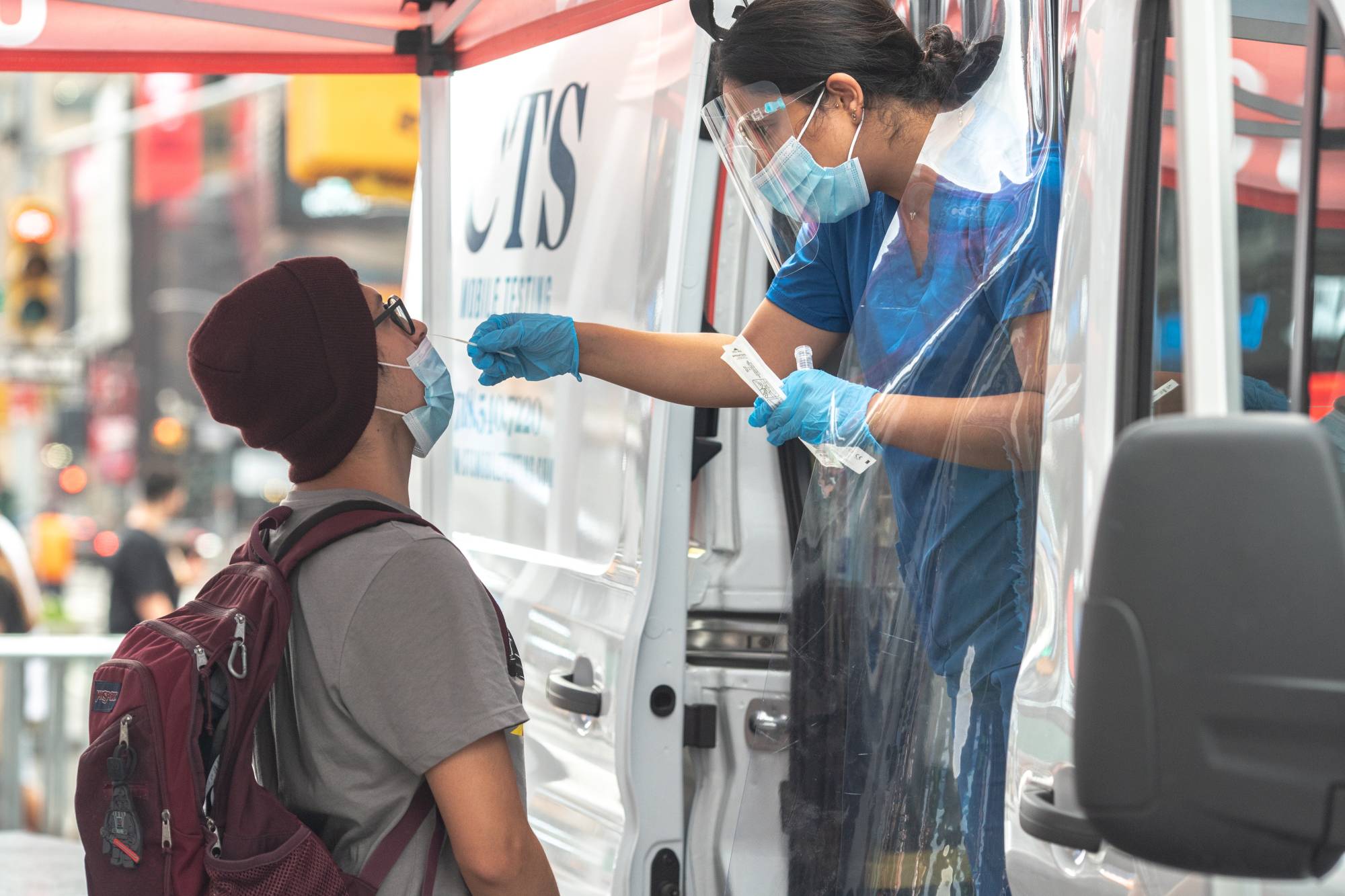Anecdotes tell us what the data can’t: Vaccinated people appear to be getting the coronavirus at a surprisingly high rate. But exactly how often isn’t clear, nor is it certain how likely they are to spread the virus to others. And now, there’s growing concern that vaccinated people may be more vulnerable to serious illness than previously thought.
There’s a dearth of scientific studies with concrete answers, leaving U.S. policymakers and corporate executives to formulate plans based on fragmented information. While some are renewing mask mandates or delaying office reopenings, others cite the lack of clarity to justify staying the course. It can all feel like a mess.
“We have to be humble about what we do know and what we don’t know,” said Tom Frieden, a former director of the U.S. Centers for Disease Control and Prevention and the head of the nonprofit Resolve to Save Lives. “There are a few things we can say definitively. One is that this is a hard question to address.”
Absent clear public health messaging, vaccinated Americans are left confused about how to protect themselves. Just how vulnerable they are is a key variable not just for public health officials trying to figure out, say, when booster shots might be needed, but also to inform decisions about whether to roll back reopenings amid a new wave of the virus. On a smaller scale, the unknowns have left music lovers unsure if it’s OK to see a concert and prompted a fresh round of hang-wringing among parents pondering what school is going to look like.
In lieu of answers, what has emerged is a host of case studies providing somewhat different pictures of breakthrough infections. Variables including when the surveys were conducted, whether the delta variant was present, how much of the population was vaccinated and even what the weather was like at the time make it hard to compare results and suss out patterns. It’s difficult to know which data might ultimately carry more heft.
“It’s quite clear that we have more breakthroughs now,” said Monica Gandhi, an infectious disease expert at the University of California, San Francisco. “We all know someone who has had one. But we don’t have great clinical data.”
One of the best known outbreaks among vaccinated people occurred in the small beach town of Provincetown, Massachusetts, as thousands of vaccinated and unvaccinated alike gathered on dance floors and at house parties over the Fourth of July weekend to celebrate the holiday — and what seemed like a turning point in the pandemic. About three-fourths of the 469 infections were among vaccinated people.

Authors of a CDC case study said this might mean that they were just as likely to transmit COVID-19 as the unvaccinated. Even so, they cautioned, as more people are vaccinated, it’s natural that they would also account for a larger share of COVID-19 infections and this one study was not sufficient to draw any conclusions. The incident prompted the CDC to reverse a recommendation it had issued just a few weeks earlier and once again urge the vaccinated to mask up in certain settings.
Still, the particular details of that cluster of cases may have made that outbreak especially bad, according to Gandhi.
“The rate of mild symptomatic outbreaks in this population was higher because of a lot of indoor activity (including intimacy), rain that weekend, not much outside time and mixture of people with different vaccination status,” she said in an email.
A newly released, far larger CDC case study of infections in New York state, meanwhile, found that the number of breakthrough infections has steadily ticked up since May, accounting for almost 4% of cases by mid-July. Those researchers cautioned that factors such as easing public health restrictions and the rise of the highly contagious delta variant might impact the results.
Yet another CDC case study, in Colorado, found that the breakthrough infection rate in one county, Mesa, was significantly higher than the rest of the state, at 7% versus about 5%. The report suggested it was perhaps because the delta variant was circulating more widely there, but also noted the ages of patients in Mesa and the lower vaccination rate may have played a role.
Research out of Israel has strongly suggested that immunity to the virus wanes in the months after inoculation, and more recently, that breakthrough cases may eventually lead to an uptick in hospitalizations.
Case studies and data from some states in the U.S. have similarly shown an increase in breakthrough cases over time. But with the delta variant also on the rise, it’s difficult to tell whether waning immunity to any type of coronavirus infection is to blame, or if the vaccinations are particularly ineffective against the delta variant. It could be both, of course. Changing behavior among vaccinated people could be a factor, too, as they return to social gatherings, travel and dining indoors.



All that said, some facts are well established at this point. Vaccinated people infected with the virus are much less likely to need to go to the hospital, much less likely to need intubation and much less likely to die from the illness. There’s no doubt that vaccines provide significant protection. But a large proportion of the nation — almost 30% of U.S. adults — have not been vaccinated, a fact that has conspired with the highly contagious delta variant to push the country into a new wave of outbreaks.
“The big picture here is that the vaccines are working and the reason for the spike in the U.S. is we have too little vaccine uptake,” Frieden said.
To a certain extent, breakthrough cases of any virus are expected. In clinical trials, no COVID-19 vaccine was 100% effective — even the best vaccines never are. The more the virus is in circulation, the greater the risk of breakthrough cases. It’s also common for some aspects of viral immunity to naturally wane over time.
For the time being, there are simply more questions than answers. Are breakthrough infections ticking up because of the delta variant, waning immunity or a return to normal life? Are vaccinated people more vulnerable to severe illness than previously thought? Just how common are breakthrough infections? It’s anyone’s guess.
“It is generally the case that we have to make public health decisions based on imperfect data,” Frieden said. “But there is just a lot we don’t know.”
In a time of both misinformation and too much information, quality journalism is more crucial than ever.
By subscribing, you can help us get the story right.
SUBSCRIBE NOW


